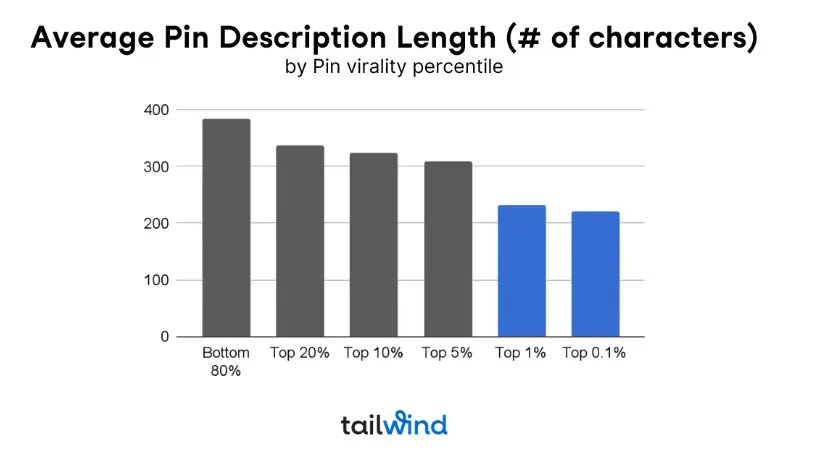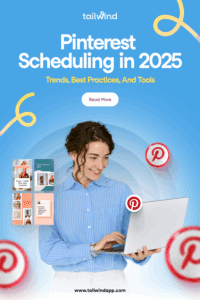
Pinterest has transformed dramatically heading into 2025, and if you’re still scheduling Pins the same way you did two years ago, you’re missing massive opportunities.
With new algorithm changes and the retirement of certain content formats, the landscape has shifted in ways that make smart Pinterest scheduling in 2025 more crucial than ever.
The platform’s evolution means that creators and businesses who adapt their scheduling strategies now will have a significant advantage over those who don’t. Recent data analyzing over 1 million Pins reveals fascinating insights about what’s working today — and what isn’t. This comprehensive guide will walk you through everything you need to know about modern Pinterest scheduling, from emerging trends to the tools that will give you the biggest bang for your buck.
Why Pinterest Scheduling Matters in 2025
Let me paint you a picture of why scheduling has become absolutely essential. Pinterest isn’t like other social platforms where your content has a lifespan of hours or maybe days. Over 60% of saves were from Pins over a year old, and Pins can keep driving traffic and engagement for a very long time. We’re talking about a platform where your content from 2023 can still be generating traffic in 2025 — if it’s done right.
The competition for attention has intensified dramatically. The top 1% of Pins drove the majority of impressions and clicks, which means success on Pinterest is partly a numbers game.
You need consistent, high-quality content flowing through the platform to increase your chances of hitting those viral Pins that drive real results.
But here’s where scheduling becomes your secret weapon: it ensures you’re posting consistently without burning yourself out, it optimizes your posting times for maximum visibility, and it allows you to plan seasonal content months in advance.
When you’re managing multiple boards, launching products, or running campaigns, scheduling transforms from a nice-to-have into an-absolute-necessity.
The data shows that consistency beats sporadic bursts of activity every single time. Pinterest rewards accounts that maintain steady publishing schedules with better distribution across their content catalog.
Top Trends in Pinterest Scheduling for 2025
The Pinterest scheduling landscape has evolved rapidly, and several key trends are shaping how successful creators approach their content strategy this year.
Assisted Scheduling Takes Center Stage
Instead of guessing when your audience is most active, modern Pinterest scheduling tools now analyze your specific content performance and automatically optimize posting times. These systems learn from your engagement patterns and continuously refine their recommendations.
Pins scheduled and published through Tailwind outperformed Pins published by any other means, including on the key metric of outbound clicks. This isn’t because scheduling tools give you some magical algorithmic boost — it’s because they guide you toward best practices at every step.
The Image Pin Renaissance
After years of Pinterest pushing different content formats, we’ve come full circle to image Pins dominating again. This trend has huge implications for scheduling because image Pins are faster to create, easier to batch, and more cost-effective to produce at scale.
Batch Creation Meets Strategic Scheduling
Smart creators are now combining batch content creation with sophisticated scheduling strategies. Instead of creating and posting daily, they’re setting aside dedicated time to create weeks’ worth of content — then using scheduling tools to distribute it strategically.
Cross-Platform Integration
The most successful accounts are no longer treating Pinterest in isolation. Pinterest marketing trends 2025 show increasing integration with Instagram, TikTok, and even YouTube content. Scheduling tools now make it easier to adapt content across platforms while maintaining Pinterest-specific optimization.
Evergreen Content Layering
With data showing that Pins between one and two years old saw the greatest number of saves per Pin, being saved on average 68 times in the last 90 days, smart schedulers are creating hybrid strategies. They layer evergreen content that will perform well long-term with timely, seasonal content that captures immediate trends.
Best Practices for Scheduling Pinterest Content in 2025
Now let’s dive into the practical strategies that will make your Pinterest scheduling in 2025 efforts incredibly effective.
Know Your Audience’s Peak Times (But Don’t Guess)
Here’s the truth that most “best time to post” articles won’t tell you: the best time to pin on Pinterest is not the same for each account. Your food blog audience might be most active at completely different times than a home decor brand’s followers.
The solution? Use tools like Tailwind’s SmartSchedule that analyze your specific audience behavior and content type to recommend optimal posting times. These recommendations adapt as your audience grows and changes, ensuring you’re always posting when your people are most likely to engage.
Schedule Consistently, Not Excessively
The sweet spot for most accounts falls between 2-5 Pins per day. Pinterest recommends that creators try to publish as much as 5-25 new fresh Pins per day because success is partly a numbers game, but don’t interpret this as “more is always better.”
Quality absolutely matters more than quantity. It’s better to post three well-optimized, highly relevant Pins per day than to flood the platform with mediocre content. Consistent daily posting signals to Pinterest that you’re an active, engaged creator worth promoting.
Prioritize Fresh Pins Over Duplicates
This is crucial: over 90% of traffic to creator and brand websites were from Creates (fresh Pins). Pinterest has significantly reduced the distribution of Saves (formerly called repins), funneling that visibility toward original content instead.
When scheduling, focus on creating new Pins for your content rather than simply re-saving existing ones. Even if you’re promoting the same blog post or product, create multiple Pin variations with different images, titles, and descriptions.
Repurpose High Performers Strategically
While fresh Pins get the most distribution, don’t ignore your proven winners. Viral Pins peak in engagement between year one and two but may have a long life even after that.
Create a system to identify your top-performing Pins from 6-12 months ago and schedule updated versions. Change the image, refresh the copy, or adapt them for new seasonal contexts while keeping the core value proposition that made them successful.
Always Link to Relevant, Mobile-Optimized Content
Your Pins are ultimately driving traffic to your website, so ensure that destination is worth the click. Pinterest users are increasingly mobile, so your landing pages must load quickly and provide immediate value.
When scheduling Pins, double-check that every link leads to content that directly delivers on the Pin’s promise. Misleading or irrelevant landing pages will hurt your long-term performance as Pinterest tracks user behavior after the click.
Optimize Every Text Element for Search
Pins with alt text are earning 25% more impressions, 123% more outbound clicks, and 56% more profile visits on average. This data point alone should convince you to optimize every text field when scheduling Pins.
Include your target keywords in Pin titles, descriptions, and alt text, but keep each Pin focused on specific terms rather than trying to rank for everything. The most viral Pins tended to have shorter descriptions, averaging in the range of 220-232 characters.

The Best Pinterest Scheduling Tool for 2025: Tailwind
Why Tailwind Dominates Pinterest Scheduling
Tailwind isn’t just another scheduling tool — it’s a comprehensive Pinterest marketing platform that was built specifically for the platform. Tailwind was one of the first three Pinterest API developer partners ever, dating back to 2012, which gives them unique insights into how Pinterest actually works.
The results speak for themselves. Pins driving high volumes of traffic were up to 54% more likely to be published through Tailwind than to be published directly on Pinterest or through any other means.
SmartSchedule: Your Personal Pinterest Algorithm
Tailwind’s SmartSchedule feature calculates the best time for YOU to post on Pinterest, not some generic recommendation based on outdated data. This system analyzes your specific content type, audience behavior, and broader Pinterest activity trends to build a custom posting schedule.
Instead of guessing when to post, you simply add Pins to your queue knowing you’re posting as close to optimal times as possible. The system adapts as your audience grows and changes, ensuring your scheduling strategy evolves with your business.
Drag-and-Drop Calendar Management
Managing a content calendar becomes intuitive with Tailwind’s visual interface. You can see your entire month at a glance, easily move Pins between dates, and identify gaps in your content schedule before they become problems.
The calendar integrates seamlessly with SmartSchedule, so you maintain optimal timing while having complete control over your content flow.
Pin Creation Tools That Actually Work
Here’s something fascinating from the latest data: 60% of the viral Pins with designed images appear to have been created using Tailwind Create or similar efficient design tools. There was not a single designed Pin among the most viral Pins that appeared to require a professional tool like Photoshop to create.
Tailwind Create allows you to produce quality Pins in one-tenth the time of other design tools. The platform includes Pinterest-optimized templates, automatic color palette matching from your images, and bulk editing capabilities that let you create multiple Pin variations quickly.
Analytics That Drive Real Decisions
Tailwind provides Pinterest analytics that help you understand not just what happened, but why it happened and what to do next. Track your Pin performance, identify your best-performing content types, and get actionable insights about your audience’s preferences.
Pinterest Native Scheduler: Limited but Free
Pinterest’s built-in scheduling functionality works fine for light users who post occasionally, but it lacks the sophistication needed for serious Pinterest marketing. You can schedule individual Pins up to two weeks in advance, but you won’t get audience insights, optimal timing recommendations, or bulk scheduling capabilities.
For businesses just testing Pinterest or creators posting less than once per day, the native scheduler might suffice. However, anyone serious about Pinterest growth will quickly outgrow its limitations.
Other Scheduling Tools Fall Short
While other social media management platforms offer Pinterest scheduling, they typically treat Pinterest as an afterthought. They lack Pinterest-specific features like Smart Scheduling, proper image optimization, and Pinterest keyword tools.
Most importantly, they don’t provide the Pinterest expertise and best practices guidance that makes Tailwind users more successful on the platform.
Plan to Succeed with Pinterest in 2025
Pinterest scheduling in 2025 isn’t just about posting content — it’s about building a strategic system that consistently delivers results. The platforms and strategies that worked in previous years have evolved, and staying competitive requires adapting to these changes.
The data is clear: accounts that use sophisticated scheduling tools, follow current best practices, and maintain consistent posting schedules significantly outperform those that don’t. With over 60% of Pinterest saves coming from Pins over a year old, the scheduling decisions you make today will impact your traffic and engagement for years to come.
Smart scheduling removes the guesswork from Pinterest marketing. Instead of wondering when to post or struggling to maintain consistency, you can focus on creating great content while your scheduling system optimizes everything else.
The investment in proper scheduling tools pays dividends through improved engagement, better reach, and ultimately more traffic to your website. When you consider that the top 1% of Pins drive the majority of Pinterest traffic, having systems in place that maximize your chances of creating those breakthrough Pins becomes essential.
Start by evaluating your current scheduling approach honestly. Are you posting consistently? Are you optimizing for the right times? Are you creating enough fresh content to feed Pinterest’s algorithm effectively? If any of these areas need improvement, implementing a robust scheduling strategy should be your immediate priority.
The Pinterest landscape will continue evolving, but the fundamentals of smart scheduling — consistency, optimization, and strategic thinking — will remain crucial for success. Brands and creators who master these elements in 2025 will build sustainable Pinterest marketing engines that deliver results for years to come.
Take action today by testing Tailwind’s free trial and experiencing firsthand how professional Pinterest scheduling can transform your content strategy. Your future self will thank you when you’re looking at Pinterest analytics showing steady, sustainable growth from the scheduling system you implement now.
 FAQ: Pinterest Scheduling in 2025
FAQ: Pinterest Scheduling in 2025
Q: What is a “Fresh Pin”?
A: A Fresh Pin is a brand-new image or video that links to new content that Pinterest hasn’t seen before. Pinterest gives more visibility to these compared to reused images.

Download the complete Fresh Pin Infographic here.
Q: How often should I schedule Pins?
A: Aim for 2–5 high-quality fresh Pins per day. Focus on consistency over volume.
Q: Should I delete underperforming Pins?
A: No. Pinterest recommends against deleting Pins. Focus instead on creating and scheduling more Fresh Pins.
Q: Can I repost the same blog post with a new image?
A: Yes! Just make sure the image, title, or description is new. Check out Tailwind SmartPin to create new Pins each week for your blog posts.
Q: How far ahead should I schedule Pins?
A: For seasonal content, start pinning 45–60 days in advance. Tools like Tailwind can help you plan this easily.
Q: Is Pinterest’s free scheduler good enough?
A: It’s fine for light users but lacks smart features like optimal timing, batch scheduling, and personalized recommendations. There are also limits on the number of scheduled Pins you can have, as well as how far in advance you can schedule. Tools like Tailwind offer more powerful automation.

The post Pinterest Scheduling in 2025: Trends, Best Practices, and Tools appeared first on Tailwind Blog.















